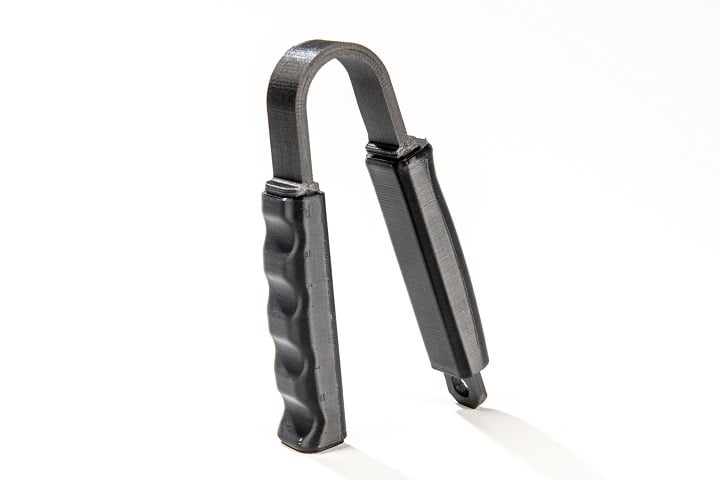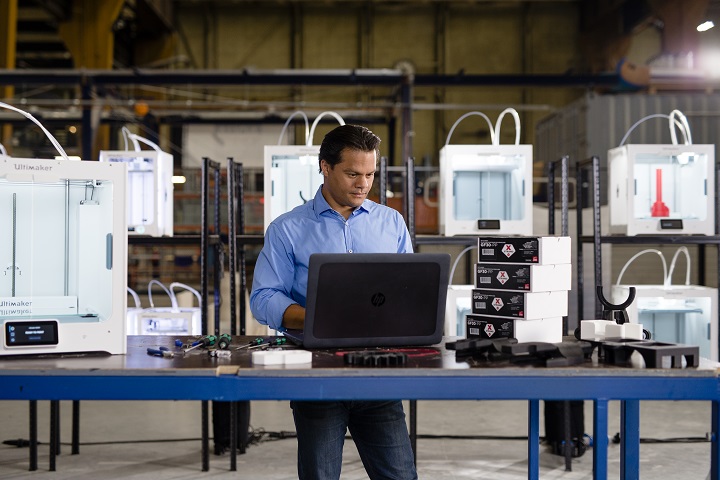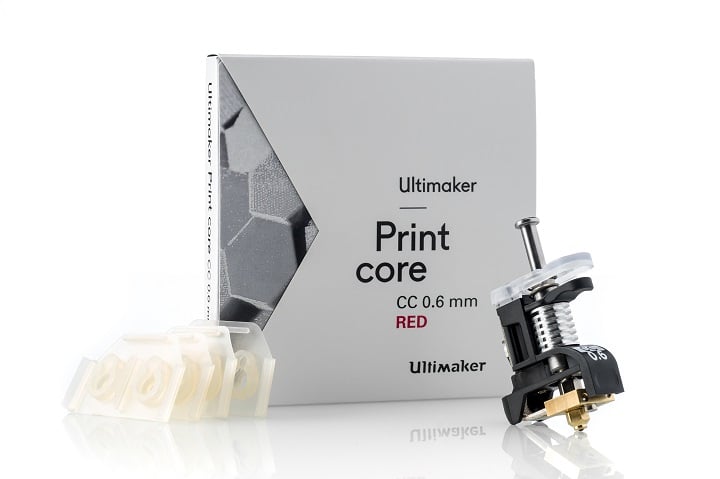![[Image: Ultimaker]](https://fabbaloo.com/wp-content/uploads/2020/05/CCRed0.6printcore_img_5eb0a65f6e1fc.jpg)
Desktop 3D printing mainstay Ultimaker continues to up its offerings for professionals with more materials-centered announcements today.
The company, which introduced its latest model in April with the Ultimaker S5, is responding to its professional users’ demand through its material alliance program. Today at the TCT Show they’re announcing material properties for DSM Novamid and Owens Corning XSTRAND filaments, as well as the new Ultimaker print core CC Red 0.6.
DSM Novamid ID1030 CF10 is an interesting filament with a low 10% carbon fiber loading that the company has said “is designed for printing structural parts which are clearly stronger, stiffer and tougher with higher tensile strength and modulus, high dimensional stability and free of warpage.”
Owens Corning’s XSTRAND, highlighting strength in mechanical and thermal properties, is targeted toward professional users and features glass fiber reinforcement.


Both DSM and Owens Corning point to their partnership with Ultimaker as a strong positioning to reach the professional desktop 3D printing market:
“Together with Ultimaker we can contribute to offer a simple hassle-free solution, as their software and the Ultimaker S5 are fully aligned with our materials to create unlimited high-demanding parts,” said Hugo da Silva, Vice President of Additive Manufacturing at DSM.
“We decided to partner with Ultimaker due to the high performance and reliability of Ultimaker 3D printers. Teaming up with their material experts resulted in the perfect settings for our materials in Ultimaker Cura. Prototyping and the creation of production tools becomes much easier, more accurate, affordable and accessible at the same time,” said Dr. Chris Skinner, Vice-President, Composites Strategic Marketing at Owens Corning.
The global material alliance opens up “the possibility to use very sophisticated engineering plastics on the Ultimaker S5,” CEO Jos Burger said. Looking toward third-party companies for these new materials capabilities, particularly globally-known leaders, underscores the seriousness with which not only Ultimaker but the 3D printing industry at large is treating materials science.
For actual advances to be made with additive manufacturing, hardware, software, and materials must all work in concert. Advances in one area but not the others will lead to uneven development, and ultimately hold back the full potential of what 3D printing has to offer. By focusing on the full ecosystem, suppliers with a holistic approach allow for a better overall leveraging of the benefits of 3D printing.
Ultimaker’s work with materials suppliers is set to provide growing access to superior capabilities.
![Jos Burger, CEO, Ultimaker [Image: Ultimaker]](https://fabbaloo.com/wp-content/uploads/2020/05/JosBurgerCEOatUltimaker_img_5eb0a6606e041.jpg)
“This alliance will continue to give more professionals access to high-end materials for all kinds of use cases and industries and will give each Ultimaker S5 in the field an extra upgrade,” Burger said.
Along with the material profiles, Ultimaker’s new print core CC Red 0.6 is set to “ensure reliable 3D printing with composite materials,” the company notes. With a 0.6mm diameter nozzle, a wear-resistant ruby, and optimized geometry, the print core CC Red 0.6 is a nice step forward alongside the enhanced materials focus.
Both the new print core and the industrial material profiles in Ultimaker Cura are set for availability in November.
Via Ultimaker











Formlabs just issued three new videos for beginners to 3D printing, and the result was quite surprising.